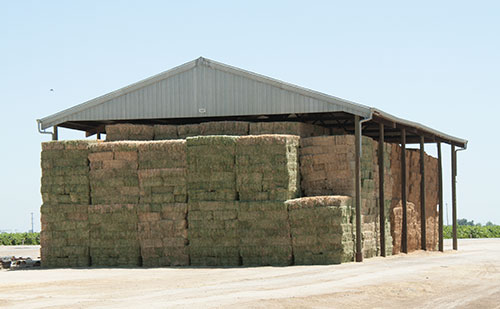
"High hay prices and corn silage costs have kept California milk production and cow numbers at bay," Seth Hoyt told those attending the opening session at the 12th bi-annual Western Dairy Management Conference. Part of the reason is water.
"California's Central Valley is the world's most productive food region. Yet we can't get enough water for crops," said the hay-and-forage pricing guru. As the competition for water heats up in California's Central Valley, there is a tug of war between the widest assortment of crops grown anywhere in the world.
"Almonds and other nut trees are driving alfalfa acres down. Plus, almonds are drip irrigated, meaning they use less water," said Hoyt. "Alfalfa yields are also down due to the continued drought. Previously, yields had been 7 tons per acre. Last year, the harvest netted 6.5 tons per acre," Hoyt said to those attending the Reno, Nev., meeting.
As a result, a number of unique price situations are taking place out west:
- Most corn silage brought $65 per ton on a standing basis in California last fall. By comparison, corn silage cost only $35 to $40 per ton in Idaho.
- Wheat straw jumped from a steady $115 per ton in August 2013 to $155 to $170 delivered in mid-2014. Demand was so strong for wheat straw in the summer of 2014 that it was being trucked in from other Western states such as Idaho and Oregon.
- Never before have we seen alfalfa bringing $150 per ton more delivered to central California dairies than rolled corn.
Feeding rates of alfalfa have plummeted mainly due to shortages which caused higher prices. This situation has caused more Western hay, from neighboring Western states, to cross into the nation's largest dairy state. "California brought more hay in from Idaho than ever before and that trend should continue in 2015," noted Hoyt.
Hay exports are also playing a role in high hay prices. "About 15 percent of all California hay is exported, only 5 to 6 percent of alfalfa hits the export market," Hoyt stated. There is a large amount of alfalfa hay that comes into California from other Western states that is exported from California ports.
(c) Hoard's Dairyman Intel 2015
March 9, 2015








